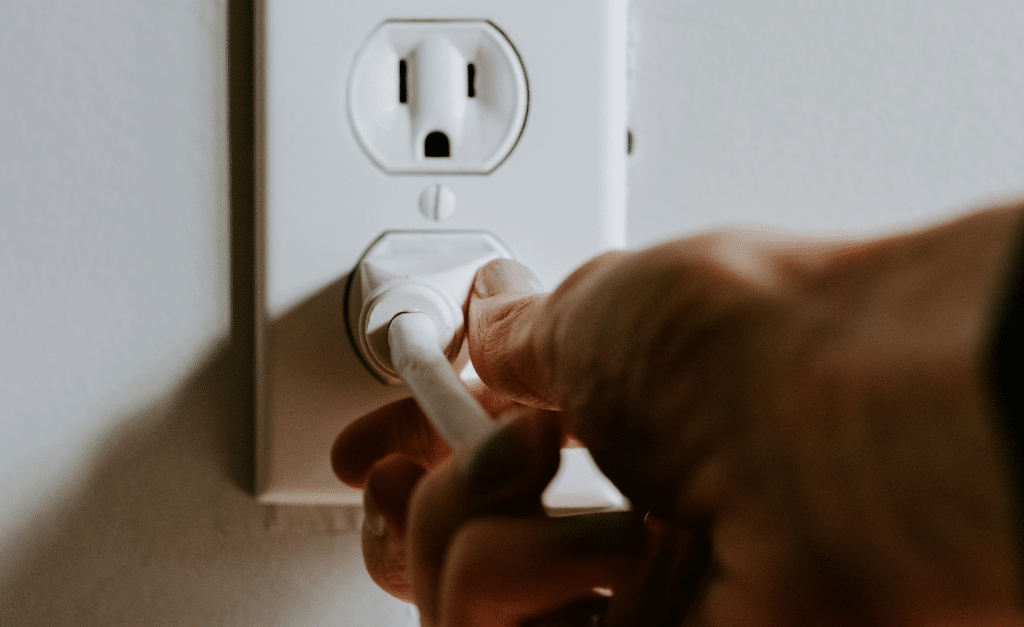
Phantom energy may be invisible, but its wasteful effects are real. (Photo: Kelly Sikkema via Unsplash)
Ever feel your electronics are haunting your energy bills? Phantom energy is real and happening all around you!
Turning off a computer, television or fan may appear to stop it from using energy. But if it’s plugged into an energy source — even when powered down, idle or in sleep mode — it’s still drawing power.
Reduce energy waste, extend the life of devices and lower electricity bills! Adopt small, mindful habits to shrink phantom energy.
Phantom energy explained
Phantom energy (a.k.a. vampire power or phantom loads) is electricity consumed even when devices and appliances are turned off, idle or in sleep mode.
Energy phantoms are electronic devices that consume power even when not use.
Common energy phantoms:
- Televisions
- Game consoles
- Computers and monitors (even in sleep mode)
- Microwaves, coffee makers, kitchen appliances with LED displays and/or clocks
- Device chargers
- Speakers
- Hair dryers, curling irons, electric shavers
Each device may only draw a small amount of electricity when idle. But all the gadgets you likely use multiplies your energy consumption. Studies estimate that phantom energy can account for up to 10 per cent of total household electricity.
Imagine shaving 10 per cent off your electricity bill! Follow the five tips below to reduce phantom energy.
SCARY PHANTOM POWER FACTS
Devices
The average home in Canada has more than 25 electronic devices all drawing phantom power at once.
Standby
Home electronics are estimated to be on standby mode 75 per cent of the time — totalling to 6,500 hours per year.
Use
Most household appliances and electronics are only used between three and 30 minutes a day.

How to make your space more energy efficient
Make your space more climate- and wallet-friendly! Make it as energy efficient as possible.
Five ways to reduce phantom energy
Get rid of energy-sucking vampires by adopting new green habits.
1. Do a home energy audit
A home energy audit is a great way to identify inefficiencies and take control of your household’s consumption.
You can hire a professional energy evaluator or DIY. Many online resources can help guide you. All you need is an energy meter — check your local community tool library! Some meters plug into wall outlets used by an electronic device to reveal exactly how much energy it uses while running and while idle.
Once you’ve identified the top culprits and practiced habits to reduce their phantom loads, check your electricity bill to see if it’s improved month to month.
2. Unplug devices not in use
The easiest way to eliminate phantom loads is to unplug all devices you aren’t using. It may not be practical for all electronics (e.g., internet modems, routers, cable boxes, refrigerators, etc.). But it’s effective for things like device chargers, entertainment systems and small kitchen appliances. Make unplugging a habit before heading to bed or out of your home or workplace.
Talk to your partner, family, colleagues and roommates about how they can contribute to a greener space by adopting energy conserving habits. Consider speaking to your workplace decision-makers about adopting energy conservation strategies.
3. Use power strips
Power strips are a convenient and affordable way to reduce phantom energy use. Plugging many devices into a power strip allows you to easily disconnect several electronics at once by turning it off. Or disconnect the strip from the outlet and re-plug it in when you need the devices.
For a more automated approach, use a “smart” power strip. They automatically cut off power to devices in standby mode.
Power strips are great for grouping electronics such as entertainment systems (e.g., televisions, game consoles, speakers, etc.) and office equipment (e.g., computer monitors, speakers, chargers, etc.). Make it a part of your seasonal decluttering!
4. Program power settings
Many modern electronics, especially computers and televisions, come with energy-saving modes that reduce power consumption when idle.
For devices you can’t unplug, adjust settings to enable sleep or away modes, reduce background activity, automatically turn off LED displays and/or disable Bluetooth or wireless internet connectivity after periods of inactivity.
5. Install smart switches and appliances
If you have the means, invest in energy efficient devices and appliances.
If you’re building or renovating, install smart switches that can turn off outlets with just a flick. This reduces the need to physically unplug devices or turn off power bars.
When considering appliance upgrades, choose ENERGY STAR–certified appliances, electronics and equipment. These are often designed with energy-saving features built in that can help reduce phantom energy use.


